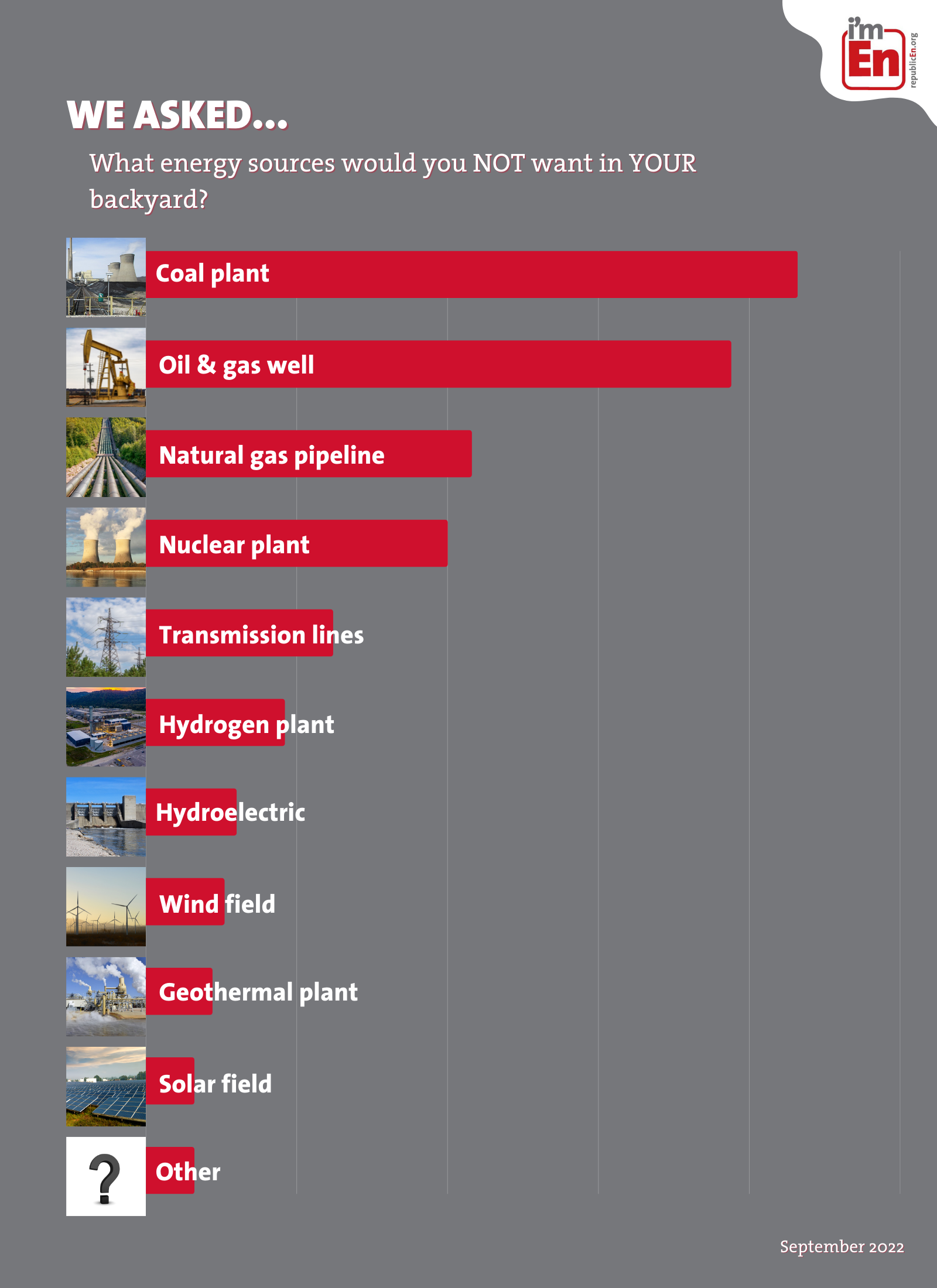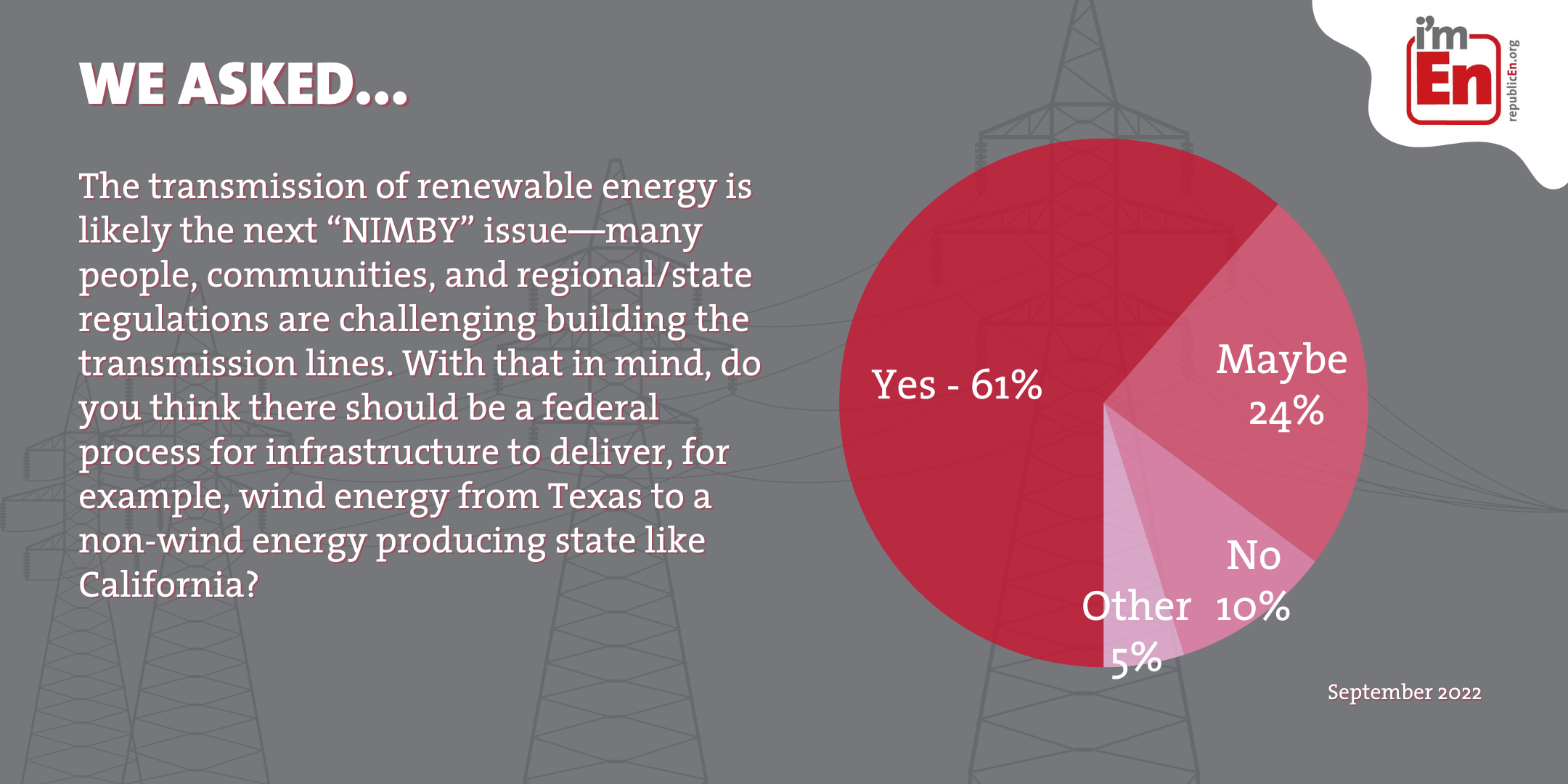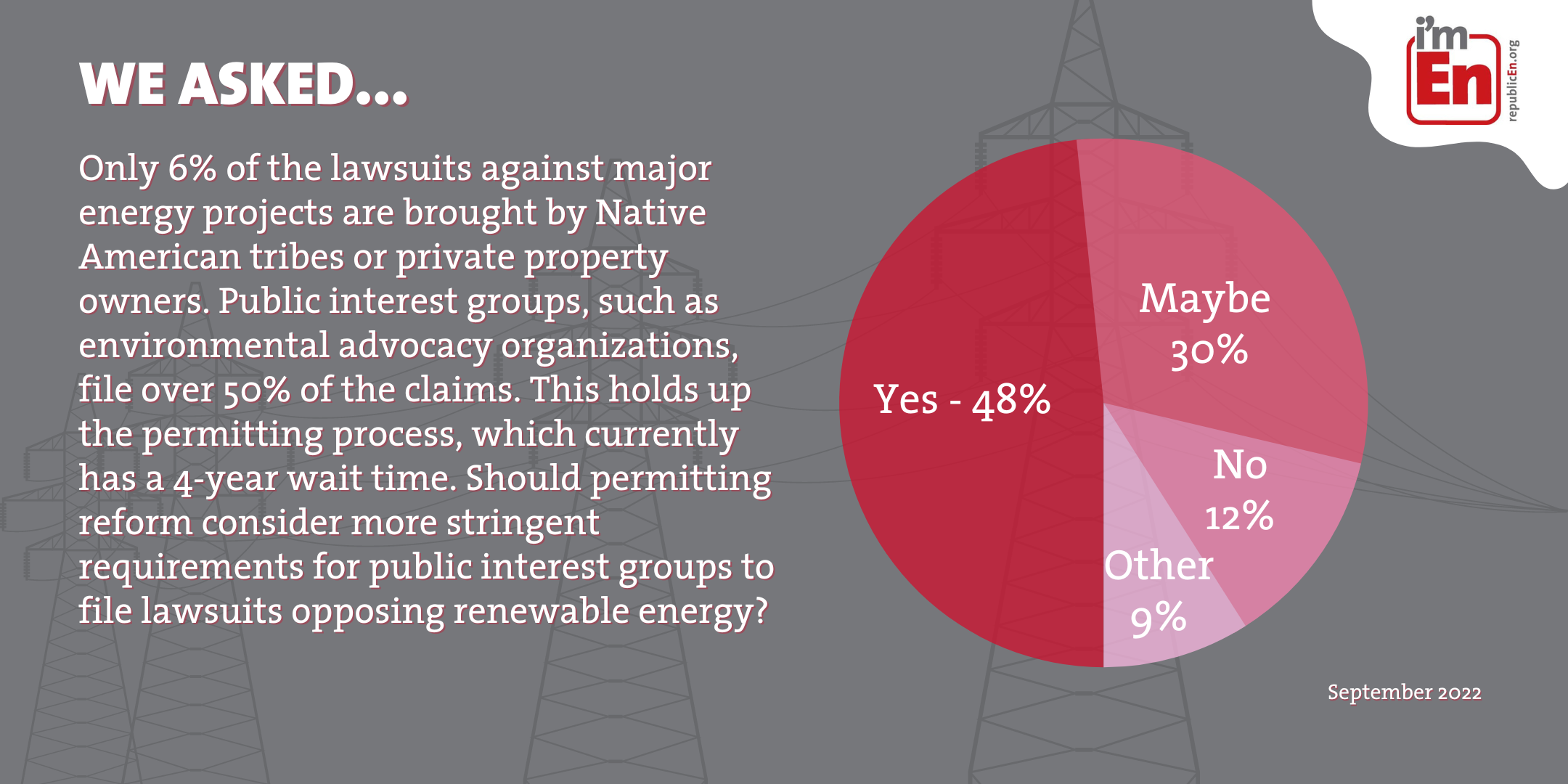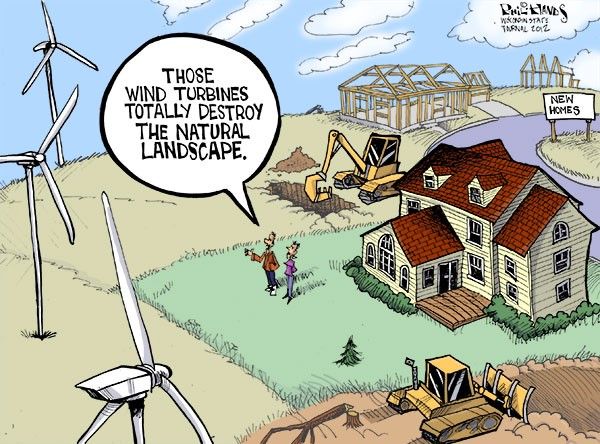NIMBY – Not In My Back Yard is an acronym that’s become popular over the last 40 years and describes the objections of people to having hazardous waste or other perceived unpleasantries (like a coal power plant) situated close to their neighborhoods. It’s become so commonplace it now even has its own political ideology, a.k.a. NIMBYism.
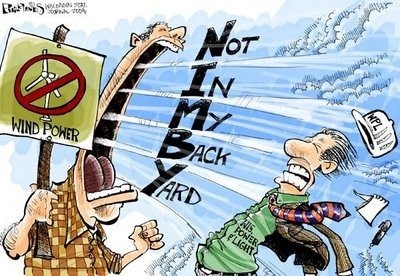
Is this a problem needing to be solved? And if so, what’s the right way to approach it?
Reform is in the air. At republicEn, we reached out to hear from the EcoRight!
Our friends and policy experts at the R Street Institute helped in crafting September’s poll. R Street Institute is a nonprofit, nonpartisan, public policy research organization with its heart rooted in the free market. Here are a few of their resources related to this month’s poll:
- Ten Congressional Electricity Reforms to Improve the Economy and Environment – Devin Hartman
- The Environmental Case for Improving NEPA – Philip Rossetti
- What Policies Could Make it Into Permitting Reform – Philip Rossetti
And one more recommended resource, hot off the presses:
Here is what we found out:
Debra D. shares, “I live in New Mexico. There is so much open land where any of these plants could be located so as not to disturb residential areas.”
Doug D. in Texas shares, “The type of installation is primary in consideration, many negatives can be mitigated if the design and construction of such facilities is done to minimize visual and environmental impacts. Yes these design aspects can be more expensive, but these extra efforts are what makes the installation something you can live with.”
Joe B. in Indiana says, “If energy production is taken up by a state or private entity in the Texas example, I don’t believe the federal government should be involved in building transfer infrastructure to other states. If the facility is built and operated under the federal government, then the transmission from state to state is allowable.”
Cliff E. in Oregon writes, “I think decentralized power production should be a major issue to push since each region of the country holds different aspects for how to generate electricity.”
Kristen K. in California shares, “There is always a balance between protecting wildlife and building renewable energy projects. It’s a complicated issue. Every effort should be made to protect wildlife and public lands, e.g., diverting transmission lines away from vulnerable habitats. If these projects are constantly being litigated, we won’t make the progress needed to reduce emissions. So, yes, I think there should be slightly more stringent requirements for filing lawsuits.”
Georgia P. in Saint Croix states, “Environmentalists need to understand that carbon is a bigger threat to life on earth than anything they are trying to protect with their crazy permits. They will save their little projects just temporarily until life on earth dies. Cutting red tape should be able to be easily sold to them.”
Jim T. in North Carolina says, “I support retaining the right of people and groups of people (e.g. public interest groups) to submit comments during permitting comment periods. I also support putting more constraints on the agencies reviewing the comments to (1) more easily discard comments outside the scope of the review and (2) more timely process the permits in the first place and also the review process. With this, a major problem I have seen is that many state and federal permitting programs are understaffed, and we need more funding for EPA as well as state DNR/DEQ.”
Poll answers represent republicEn members across 35 states (we received entries from both Alaska and Hawaii!), plus the U.S. Virgin Islands. Texas submitted the most responses, with California coming in second. The political leaning of poll takers: 39% lean right, 39% claim center, 21% lean left, and 1% are unsure or prefer not to say.
We received a ton of freeform comments, and although there was a big focus on NIMBY in this poll, I was impressed by the number of participants open to expressing YIMBY (Yes In My Back Yard). Here are more shared thoughts and opinions from our members:
- “Small modular nuclear plants solve lots of problems, and I say YIMBY to that (yes, in my back yard).” – Wayne K. in Texas
- “The logic is simple: the centers for producing non-carbonaceous energy (chiefly nuclear, solar pv, and wind) do not coincide with the centers of population. Therefore the energy must be moved to the need in some way. Otherwise, you cannot switch to these resources.” – David B. in South Carolina
- “Permit reform should be transformational. Instead of keeping the current scheme but shortening its duration, we should have a complete overhaul. Eliminate the procedural system we have under NEPA and CEQA and change to an objective, outcome-based system for permitting. If projects meet objective standards, let them be built by right without years of wasteful study, meetings, etc. ” – Richard C. in Arizona
- “I think that energy security would benefit if we were better focused on energy at the local or individual level. If a town is in a good location for solar or wind it should capitalize on that and provide cheap energy to the town. I’m definitely not an expert to know if this is feasible, but I like the idea of energy generation at the local or personal level (rooftop solar) so that there is more transparency and accountability in the energy supply process. I do realize that this might not be the most efficient way to run the grid, but right now, the process is so convoluted that I don’t think the average person could understand how their power is supplied.” – Tracey C. in Ohio
- “Think dispersed (backyard?) clean energy sources. Nobody can attack a grid that does not exist, and the monopolies that own the grid should not be perpetuated.” – John D. in Florida
- “Other reforms should be pursued to speed the permitting process, not cutting out public interest groups’ ability to support plaintiffs. That would set a bad precedent in other areas. ” – Rick D. in Maryland
-
- “Could we include distributed energy in the discussion? reducing the need for transmission lines and installing energy that is appropriate to the locale (wind in windy places, solar in sunny places, maybe biodigesters in places with agriculture waste like rice husks, etc. I think Denmark has successfully modeled the distributed energy approach. ” – Trudy H. in Colorado

